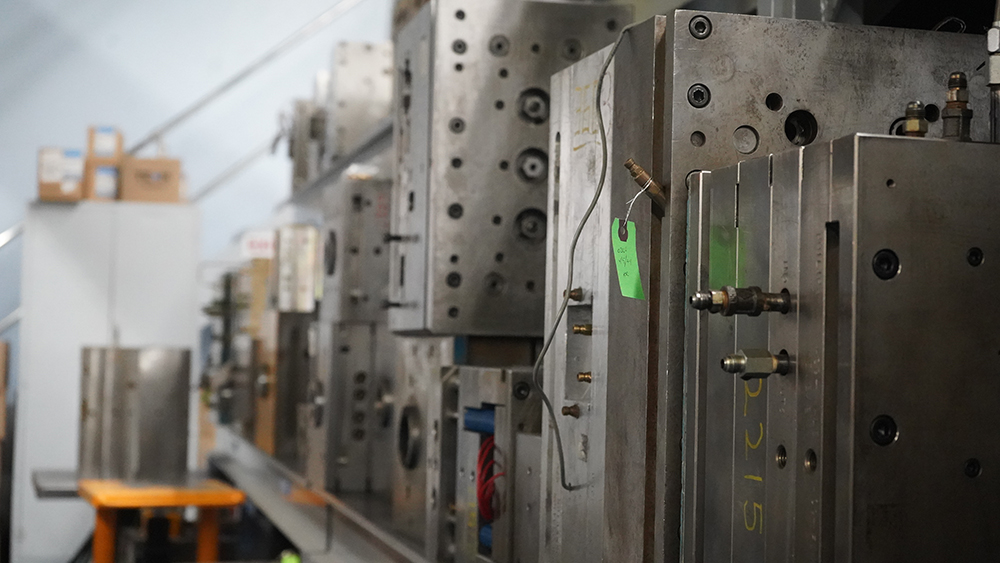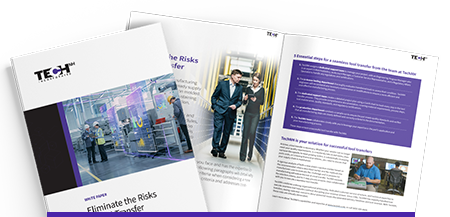
In today’s competitive manufacturing landscape, maintaining a reliable supply chain of high-quality plastic injection molded components is critical to a company’s success. Challenges such as declining quality, delivery delays or increased costs can jeopardize business operations and customer satisfaction. In these situations, transferring tooling to a new plastic injection molder becomes necessary to safeguard operations and profitability.
However, tool transfers are not without risks. Poor planning or execution can lead to downtime, defective products and disrupted supply chains. To navigate this complex process effectively, careful consideration, planning and collaboration with the right partner are essential. TechNH, a leader in plastic injection molding, has developed a comprehensive approach to mitigating the risks of tool transfers, ensuring a smooth transition for its clients.
This blog explores the critical steps for a successful tool transfer and highlights how TechNH’s expertise can help you avoid potential pitfalls.
 |
Unhappy with your current molder?See how to seamlessly transfer your tool to get started. |
Get White Paper |
When Is a Tool Transfer Necessary
Identifying the right time to transfer your tooling to a new manufacturer is crucial. Some key indicators include:
- Declining Quality: A consistent decrease in the quality of parts can lead to product failures and damage customer trust.
- Delivery Challenges: Missed delivery schedules can disrupt operations and result in lost business.
- Inability to Scale: As demand grows, your current supplier may lack the capacity to meet increased volume requirements.
- Cost Increases: Rising costs that eat into profit margins may necessitate a search for a more cost-effective partner.
- Vendor Instability: Financial issues or staff turnover at your supplier may signal the risk of disruption to your supply chain.
Strategic considerations may also drive a tool transfer. For instance, consolidating the supply chain by working with a manufacturer closer to your operations or aligning with corporate directives for secondary sourcing can increase resilience and efficiency.
Selecting the Right Partner for Tool Transfers
Choosing the right plastic injection molder is essential to mitigate risks during a tool transfer. The ideal partner should excel in the following areas:
- Engineering Expertise: Evaluate the tool’s condition and optimize it for consistent, high-quality production.
- Documentation and Compliance: Ensure thorough documentation of processes and adherence to relevant industry standards.
- Production Capabilities: Confirm the manufacturer’s ability to handle varying volumes with the necessary machinery and capacity.
- Quality Assurance Systems: Verify robust quality control measures and an independent quality team.
- Regulatory Knowledge: Partner with a manufacturer experienced in meeting compliance standards for industries like medical, aerospace and defense.
- Financial Stability: Work with a financially sound company to ensure long-term reliability.
TechNH meets and exceeds these criteria, offering unmatched technical capabilities, cleanroom manufacturing for contamination-sensitive products, and robust quality assurance processes.
Essential Steps in a Tool Transfer
A successful tool transfer involves several carefully managed steps:
- Dedicated Support Team: Assemble a cross-functional team, including technical, sales and regulatory specialists, to oversee the transfer.
- Tool Assessment and Preparation: Inspect the tools to evaluate their condition and recommend necessary maintenance or modifications.
- Comprehensive Planning: Create a detailed project timeline, ensuring safety stock is available during the transition.
- Process Documentation: Develop thorough documentation covering material specifications, production processes, maintenance schedules and quality requirements.
- Sample Run and Validation: Conduct a sample run to verify that the tools produce parts meeting all specifications and quality standards.
TechNH excels in this process, leveraging advanced technology and experienced professionals to streamline every phase of a tool transfer.
Why Collaboration Is Key
Collaboration with the new manufacturer is crucial to the success of a tool transfer. Open communication ensures that your knowledge of the part’s application and previous manufacturing processes is fully utilized. This partnership fosters innovation and helps identify opportunities for process improvements, ensuring the new manufacturer meets your exact requirements.
TechNH prioritizes collaboration, involving clients at every stage of the transfer process. This approach builds trust and ensures alignment on quality expectations, production goals and timelines.
TechNH’s Proven Approach
TechNH has a long history of successfully managing tool transfers, offering clients confidence and peace of mind. Here’s what sets TechNH apart:
- Versatile Capabilities: With press ranges from 16 to 780 tons and expertise in high temperature thermoplastics, TechNH handles projects across industries including metal to plastic conversion, general industrial, green energy, defense and medical.
- Cleanroom Manufacturing: ISO Class 7 cleanrooms ensure contamination-free production for sensitive components.
- In-House Tooling Expertise: TechNH’s tool department evaluates and maintains molds, optimizing them for cost-effective and efficient production.
- Compliance and Validation: TechNH holds certifications like ISO 13485 and employs rigorous validation processes, including IQ/OQ/PQ and PPAP frameworks.
- Customer-Centric Approach: A dedicated support team collaborates with clients to address unique challenges and tailor solutions.
The Benefits of Partnering with TechNH
When transferring tooling, minimizing downtime and ensuring product quality are paramount. TechNH’s comprehensive five-step process ensures a seamless transition with minimal risk. Their experienced team, robust processes and commitment to customer satisfaction make TechNH a trusted partner for any tool transfer project.
Discover How to Mitigate Risk Download the Full White Paper
Transferring tooling to a new plastic injection molder can be daunting, but with the right partner, it can also be an opportunity to enhance quality, reduce costs and improve supply chain resilience. To learn more about mitigating the risks of tool transfers, download our detailed white paper: “Mitigating the Risks of Tool Transfer.”
This resource provides in-depth insights into assessing the need for a transfer, selecting the right partner and executing a successful transition. Don’t let uncertainty hold you back—equip yourself with the knowledge and strategies to make your next tool transfer a success.
By addressing every aspect of the tool transfer process, TechNH demonstrates its commitment to excellence, making it the ideal choice for manufacturers seeking a reliable partner to navigate this critical transition. Reach out to TechNH today and experience the difference.
